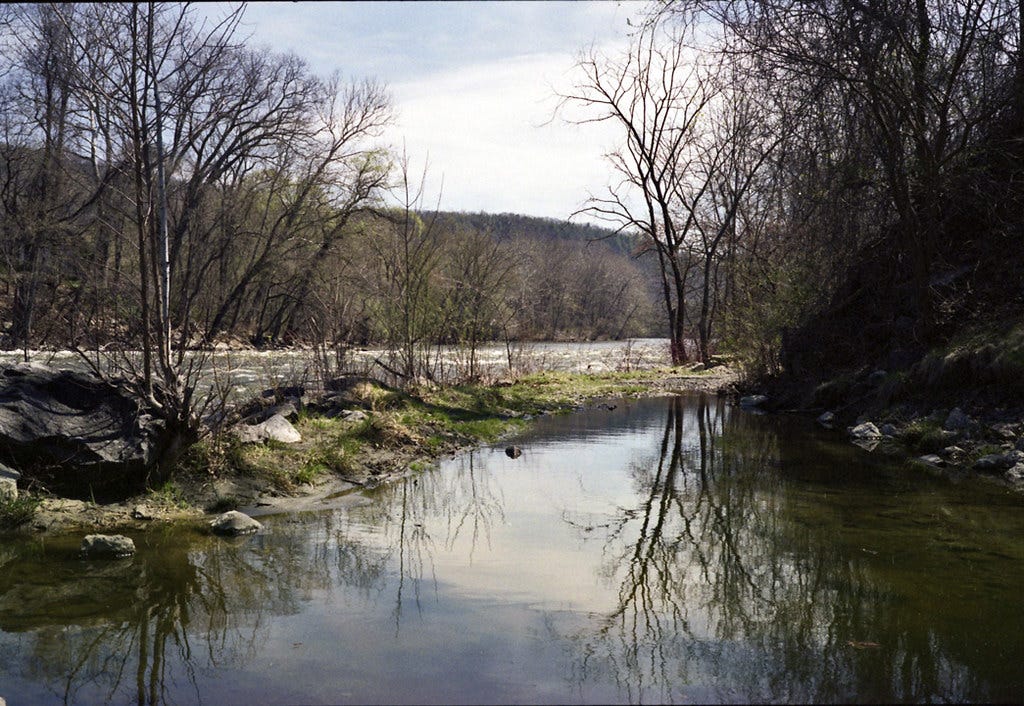Around this time each spring, when the mud flows like wine and brief interludes of sun force you to shed layers that you’ll have to throw back on as soon as the clouds and wind converge, I can hear the opening notes of one specific song—“These Streets Will Never Look The Same,” by the now-defunct Portland, Oregon band Chromatics. Why? Because in 2013, a year after the song was released, I found myself listening to it on rotation, as a way of staying sane during the longest commute that I’ve ever known.
The situation looked idyllic at first glance. I had relocated to the White Mountains and agreed to work as a spring caretaker at Zealand Falls Hut—the lower elevation crown jewel of the Appalachian Mountain Club’s backcountry hut system. Nestled in a vast and secluded valley with beaver bogs, glacial boulders, and cascades, Zealand Falls Hut first charmed me when I was a wee lad, visiting the place with my parents. It sits on an exposed overlook from which you can stand on the porch and gaze out toward Mount Carrigan against violet sunsets. The thought of being the sole occupant of Zealand Falls Hut during the off-season charmed my pants off. But I was so thrilled by the prospect of spending a spring there that I overlooked something rather important.
The access trail up to Zealand Falls Hut—the Zealand Trail—is a gentle and enchanting passage from hemlock woods to wetlands with wooden bridges and stepstones. But that trail begins from the end of a 3.5-mile dirt road that branches off from Route 302 (the interstate weaving through Crawford Notch.) And during the winter and spring, that road is closed to vehicles. In the winter, with enough snow, you can glide up and down the road on cross-country skies. But during mud season, you have no choice but to walk the saturated, spongy road. This meant that whenever I needed to return to the valley to pick up some more cans of tuna, to send an email, or to buy a new Virginia Henley romance paperback at the closest bookstore, I had to walk 6.3 miles. Twice.
At first, when I moved my clothes and sleeping bag into the hut and started to absorb the fuller reality of what I had signed up for, the commute seemed like a burdensome nightmare. It would consume the majority of my free time between 8am and 5pm; the hours when I had to check in with the AMC HQ by radio, confirm that the hut had not burned down in a woodstove fire, and sometimes inquire about any missing overnight guests who were on my reservation sheet. This was over a decade before “slow travel” became the talk of travel magazines and influencers. The thought of a long, out-and-back walk through the same forest each week—not because I felt like it, but because I needed to take care of business in the valley—seemed to necessitate a phone full of MP3 tracks. And that’s how I found my way to that dark, mournful Chromatics track.
The elements seemed to compliment each other. The portentous synths and the tall, leafless tree trunks. The brittle guitar notes and visible flecks of ice on the river that rushes beside the Zealand Trail access road. Adam Miller’s eerie and vocoder-bathed lyrics and the occasional hum of the wind blowing through the valley. Some of us will spend our lives looking for the perfect song to accompany their daily commute, and I was fortunate enough to stumble upon one within a week of becoming a hut caretaker.
To my surprise, I started to look forward to my long walk home—which I undertook at least twice a week. The initial walk from the hut to Route 302 hadn’t completely lost its sole-crushing weight—no sountrack was good enough to make me lose sight of the fact that this was only the beginning of a squelchy 12.6-mile journey. But when I found myself back at the access road in the early afternoon, after acquiring provisions and circling back to missed messages, my mood had changed considerably. I knew this road intimately. It was the only thing standing between me, the hut, and a gooey potful of Annie’s mac and cheese. There was nothing else to do but enjoy some quality time alone with the road and the pine woodlands through which it snakes. And I could bring one of my favorite bands with me. Somehow, they fit into this desolate landscape too.
But even on the moodiest of these return journeys on the Zealand Trail access road, it never occurred to me that I was experiencing something that used to be a ritual for nearly all of mankind—something that millions of us have long since lost touch with.





